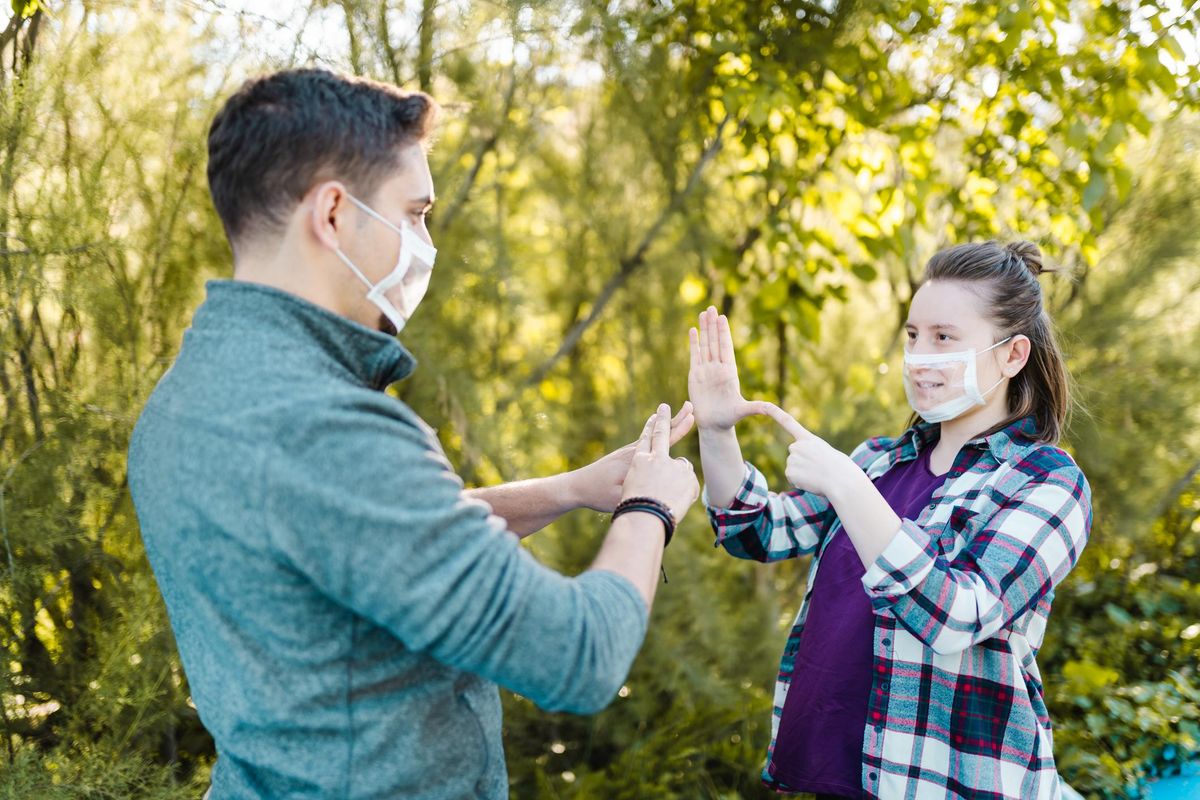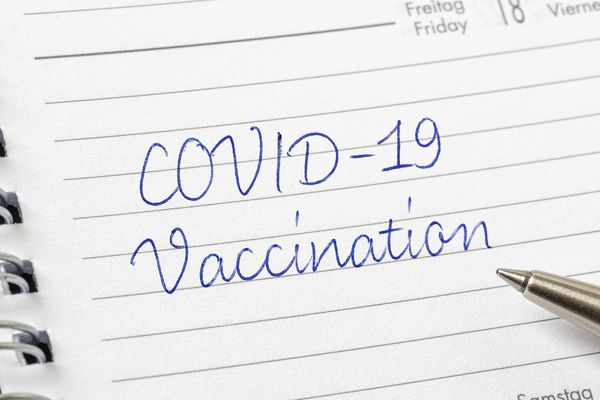I still don't know why the woman on the sidewalk was shouting at me. I'm sure she was shouting, though — even if you're deaf, face coverings don't mask anger. That's all in the eyes.
Maybe she was annoyed I couldn't wrangle myself, dog and toddler out of her way fast enough. Maybe we happened upon her mid-tirade, and her anger had nothing to do with us. Whatever it was, it was an example of what had become the defining characteristic of my Covid-19 pandemic interactions with hearing people: impatience.
(Clear) masks can’t save us
Precautions for preventing the spread of Covid-19 have had grave implications for deaf and hard-of-hearing communication. While some portions of the disabled community have found changes brought on by the pandemic — like an increased ability for remote work — helpful in the fight for accessibility, the Deaf community is largely left behind by the radical changes society has made in adapting to the virus.
For many deaf people, the most obvious barrier to communication is the face mask. Even for signing people, a mask can be a nuisance since facial expressions and mouth movements play an essential role in American Sign Language (ASL) grammar. But in deaf-hearing interactions, the mask is often insurmountable.
"Masks that cover the lips are a barrier to lipreading … and provide more sound distortion," said Kym Meyer, Ph.D., an educational audiologist and certified teacher who is hard-of-hearing.
Many have turned to clear masks as a solution, and while they're better than nothing, they still obscure sound, are more expensive, and are prone to fogging. But their biggest shortcoming is one most people haven't even considered: For a clear mask to help, it must be worn by the hearing speaker, not the deaf one.
But even if hearing people were to mask up with clear face coverings, deaf-blind people, those who have a combination of hearing and vision loss, would continue to be left out. Deaf-blind people who use Protactile, a touch-based language that requires extensive physical interaction, are experiencing profound isolation under Covid-19 restrictions. Each day, they are forced to choose between violating social distancing rules and risking exposure, attempting to use less-effective methods of communication, or remaining alone.
It’s a feature, not a bug — discrimination on Zoom
Communication difficulties don't end when the masks come down for online interactions. Favored video conferencing platform Zoom only offers closed-captioning for certain paid tiers. Other platforms, such as Google Meet and Microsoft Teams, have integrated automated captions, which help but often misunderstand proper nouns or specialized vocabulary. Meanwhile, deaf people using interpreters during group meetings must choose: enlarge the interpreter's screen and forgo the facial expressions and contextual information of everyone else in the meeting or stay in gallery mode and squint.
Even an all-Deaf meeting is stuck with a screen full of tiny squares — Zoom's active speaker view, which shows the person speaking, does nothing for a group of signers.
Covid-19 during the critical window
The myriad barriers to both in-person and remote communication meet in a perfect storm when it comes to the classroom. Many deaf students and deaf mothers face online communication barriers and have found it difficult to get help from stressed teachers and administrators.
"Due to ignorance or flat-out resistance, I see people having to fight for their right to access, especially in the schools," said Dr. Tina Childress, an audiologist and late-deafened cochlear implant-user, of the move to remote and hybrid learning.
But some of the largest educational barriers deaf children face have always been right at home. In the US, 90% of deaf children are born to hearing parents, and the majority of those parents — by some estimates as high as 80% — don't learn sign language.
As a result, many students are experiencing extreme isolation in language-poor environments. "Students who use American Sign Language (ASL) may not have many, or any, people they can communicate with when they are not physically in school," said Meyer.
This can be especially dangerous for children ages 0-5, who are in what linguists call the "critical window" for language development. If language fluency isn't established in this period, language deprivation may result in permanent cognitive damage.
Danger, amplified
"Marginalized communities ... are greatly impacted by Covid," said Meyer. "Deaf/hard of hearing children and their families who are also part of these marginalized communities are experiencing extreme challenges to accessing their learning and social-emotional health."
Deafness compounds existing systemic problems in large part because an ASL/English language barrier prevents access to information and relief services. A recent American Psychological Association survey found that Covid-19 was highlighting "preexisting health disparities" for deaf people across the board, including elevated levels of food worry. Those levels are even higher for deaf LGBTQ people.
Inaccessibility on telehealth platforms, in particular, means deaf people don't have equal access to health and prenatal care. Both deaf and hearing people of color already suffer higher infant and maternal mortality rates and are dying of Covid-19 at disproportionate rates, and adding inaccessible health care to that only amplifies these risks.
All the while, deaf and disabled people have expressed worry that stigma will lead doctors and ethicists to value disabled lives less, if and when strapped medical systems must ration care. And as the stress and mental health needs of all people in isolation skyrocket, mental health care remains difficult or impossible for deaf people to obtain, due to cost and language access.
Empathy as hope
As is often the case, most of the biggest strides toward pandemic-era equity have been made for deaf people by deaf people. The community continues to lobby for captions on Zoom and social media, and Dr. Childress' blog, Connect-Hear has provided a wealth of information for deaf-hearing interactions and technical workarounds. In September, the National Association of the Deaf won a landmark case against the White House, requiring them to have an ASL interpreter at coronavirus briefings. The administration has since complied.
"I feel that ironically, [the pandemic] actually unmasked how difficult it is for everyone to communicate," said Childress. "Many hearing friends have commented on how they empathize with me since they are now struggling with communication."
And while I wouldn't wish Zoom fatigue on anybody, it certainly gives hearing people a window into the listening fatigue deaf and hard-of-hearing people experience daily. A silver lining to the coronavirus: If our time masked up and plugged in results not only in more safety, but also more patience, our post-pandemic world will be that much more accessible.







